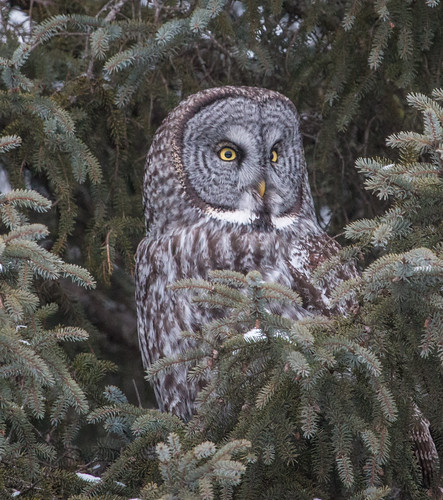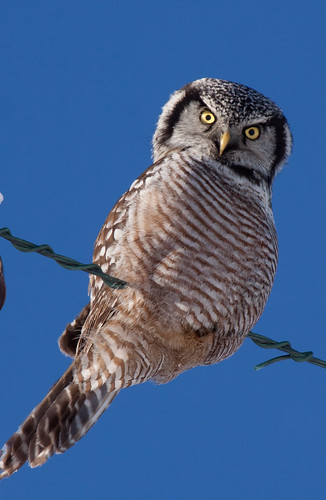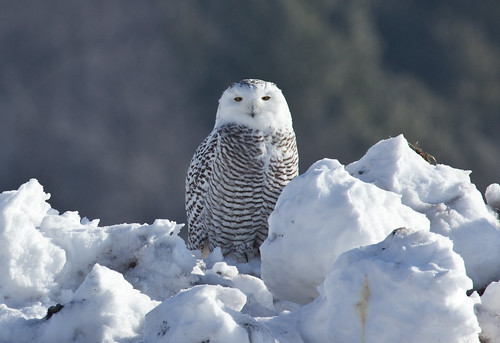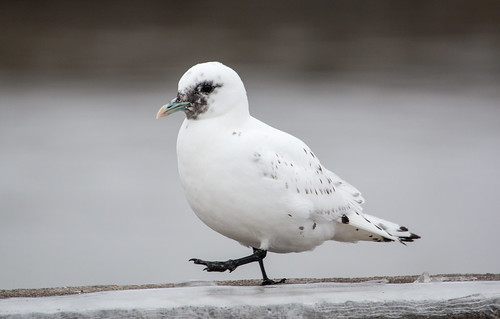 |
| Ivory Gull dining on salmon |
 |
| Selfie with the Ivory Gull |
Every year, I write about how irresponsible it is for birders and photographers to bring pet store mice, gerbils, and other rodents to the Sax-Zim Bog to feed the northern owls visiting there. (Yes, I know I never complain about the bird banders I know who do this. To me, the ethical issues regarding feeding birds for better looks for birding and photography purposes are entirely different from those regarding banding and other research purposes.)
What's the difference that makes it okay ethically to for birders and photographers to feed gulls but not owls? It's a simple matter of biology and bird behavior.
Owls are obligate predators of live prey. When they acclimate to humans and, even worse, when they learn to associate us with food, they become far more likely to be killed in collisions with cars and windows, to be reported as nuisance birds, or to be shot.
This opinion is not just based on a gut feeling by me. A great many research and conservation organizations staffed by the most knowledgeable ornithologists, rehabbers, and others with decades of experience with owls all affirm that feeding owls is unethical and dangerous for owls. No organization with this kind of knowledge and experience with owls endorses feeding them.
Fortunately, most northern owls aren’t particularly disturbed by the presence of large mammals in their natural habitat—they can easily elude bears—and so they are relatively easy to see and to photograph when you happen to find them. I’ve had wonderful opportunities to photograph at close range Great Gray, Northern Hawk, Boreal, and Snowy Owls without ever tossing out bait for them. All these photos were taken of wild owls that were not lured by food. Indeed, the individual birds in first three photos each caught natural prey while I was watching them!
 |
| Great Gray Owl |
 |
| Northern Hawk Owl |
 |
| Boreal Owl |
 |
| Snowy Owl |
Gulls, on the other hand, and especially the Ivory Gull, are natural scavengers. The American Ornithologists’ Union and Cornell’s Birds of North America entry for Ivory Gull states, “It is an opportunistic, aggressive, and voracious feeder, and in certain circumstances can be quite tame and easily approached by people.” Regarding its food habits, the BNA goes on:
Like most gulls, an opportunistic feeder. Major prey includes sympagic (ice-associated) fish and invertebrates washed onto floes or caught nearby in surface waters. Infrequent sightings originally prompted observers to conclude that Ivory Gulls were largely dependent on scavenging feces and carcasses of polar bears, whales, walruses, and seals. Inuit hunters in High Arctic regularly observe Ivory Gulls scavenging marine mammals that hunters have just killed, and will readily scavenge bird carcasses when available. However, given remote pelagic habitats where species typically forages, reliance on offal and carrion probably exaggerated by early naturalists.Even if the Ivory Gull could eke out its own living on Lake Superior in the short term, before heading back to the Arctic Ocean, its behavior of checking out the birders for food wasn’t learned here in Duluth—this is the bird’s natural inclination. So as far as I’m concerned, there are no ethical caveats about providing nutritious fare for the Ivory Gull.
Anyone who thinks we should apply the exact same rules for owls and gulls is showing an abysmal ignorance of bird behavior and ecology, and a fundamental lack of common sense. There IS a difference between the groups, and all I can say is vive la différence!
 |